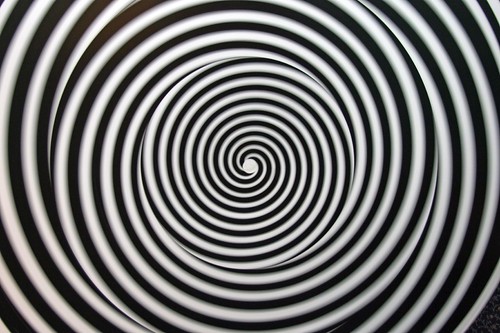
'lest such arcane chicanery enslave our chicklets, we should find the breast milk of righteousness for their pouting mouths and remove the teat of poisonous cinemas from our towns.' Pastor Sid McBaleful, on seeing The Ecstacysms.
When this B-movie arrived, America was expanding and retracting to the first playings of the suburban teenage1 drama (in which under-21s first traced the now-perennial contours of liberation and frustration), and as such, it hit a spot. How a movie hits a spot is hard to say; but timeliness is all with regards to this kind of phenomenon, and this marriage of technicolor schlock and heightened sensitivities to the subject matter found a bullseye, and the exploitation picture was truly born.
In the pre-rock'n'roll fifties, 'ecstacysms' were hard to describe. Frantic tabloid suggestions multiplied with a collective libidinous urge to create delirious images in the public mind: Pre-teens were being eaten by beatniks, adolescents were cyborging their brains, illegal inter-racial homosex was a contagious epidemic, passed from sibling to sibling. Movie theaters were rumoured to contain poisonous pheromones, given off by a potent cocktail of youths multiplied by horniness, and as such, films aimed at young people were on dangerous ground. The state of Alabama banned popcorn after a scientist there claimed that it contributed to the sinful mixture, causing electric brain washes, and local pastor Sid McBaleful began a national campaign to ban cinemas. His polemic was even captured in a documentary that was, somewhat ironically, shown at drive-ins. Sid Says (Doug Long, 1954) was played before main features in an attempt to persuade young people to ignore movies and embrace a wholesome life. Theaters were happy to show the piece, as not only did McBaleful pay a princely sum for the slots, but movie-goers showed up in droves and bought extra popcorn to throw at the screen while it played, cheering every direct hit to the famous McBaleful bald pate.
Roger Corman's creation, then, one of twenty he made that year, managed to combine two concerns of the fearful right. Not only was it a cheap and lewd movie, but his subject matter was the gathering of young people into ritualistic groups, the like of which the adult world had heard about from newspapers, but did not understand. Shot in a documentary style, The Ecstacysms follows a group of curious youngsters as they deconstruct the shibboleths necessary to gain admittance into a group of peers that gather in remote locations to undergo what one teen calls 'a period of adsolute frenzy'. This frenzy is not drink or drug fuelled, but sponsored by young agony: at the conclusion of the film, we discover that the teens merely stand in circles and emit low moans in tandem. It is their sadness that horrifies the town, far more than any bad behaviour. Corman's entry into the fiery debate is ultimately quietly moral.
Lillian Gish appeared in the film as Annie, a widowed mother who achieves orgasmic delirium during the ecstacysms, and becomes obsessed with pushing further. Drawing the old-Hollywood Gish into the film might have threatened the lo-fi veracity of the experience, but to some, seeing a familiar face only seemed to enhance the film's plausibility: Gish received many letters from many viewers 'concerned' by her experience in the film. One even hitch-hiked from her home in New Jersey to visit the town of Youth, California, the setting for the film, to check on the occupants. Needless to say, she didn't find it. Youth, CA, is a fictional town.2
The Ecstacysms Directed by Roger Corman Produced by Roger Corman Written by Roger Corman Starring Rex Wigler Lillian Gish Sandy Doon Leslie Haslow Woolner Brothers Pictures Inc Release Date US: March 1952 Tagline: 'Where Do Our Kids Go At Night?'
1. The word 'teenager' can be attributed to the French film Tenage (Louis Louis, 1944) in which the titular protagonist, Marc Tenage, found himself in a constant state of delirious stubbornness.
2. A post-script: that woman, Betsy Louise Sherman, was so distraught at her inability to find Youth that she wandered the state in distress. Authorities asked Corman to rebuild the smalltown set that represented Youth in the movie in a bid to draw Ms Sherman back from a trance-like existence. Upon seeing Youth with its small corner store, iconic fountain and smiling extras, she whispered 'Oh, that's okay then,' before collapsing. She made a full recovery in hospital from Fictional Coma Syndrome, a condition now popularly known as 'Betsy's Trance'. John Carpenter made a film about Betsy Sherman in 1985, starring Veronica Cartwright, entitled Betsy's Dream (In Europe, this film was released as Oh That's Okay Then).





No comments:
Post a Comment